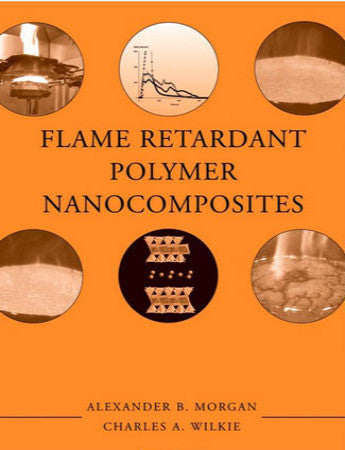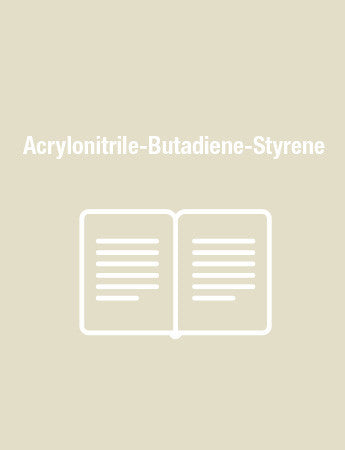Flame Retardant Polymer Nanocomposites
Flame Retardant Polymer Nanocomposites takes a comprehensive look at polymer nanocomposites for flame retardancy applications and includes nanocomposite fundamentals (theory, design, synthesis, characterization) as well as polymer flammability fundamentals with emphasis on how nanocomposites affect flammability.
The book has practical examples from literature, patents, and existing commercial products. Readers can design new work based upon the material in the book or use it as a handy reference for interpreting existing work and results.
The book has practical examples from literature, patents, and existing commercial products. Readers can design new work based upon the material in the book or use it as a handy reference for interpreting existing work and results.
Chapter 1. Introduction to Flame Retardancy and Polymer Flammability.
Chapter 2. Polymer Nanocomposite Technology, Fundamentals.
Chapter 3. Flame Retardant Mechanism of Polymer Clay Nanocomposites.
Chapter 4. Molecular Mechanics Calculations of the Thermodynamic Stabilities of Polymer/Carbon Nanotube Composites?
Chapter 5. Considerations on the Specific Impacts of the Main Fire Retardancy Mechanisms in Nanocomposites.
Chapter 6. Intumescence and Nanocomposite: a Novel Route for Flame Retarding Polymeric Materials.
Chapter 7. Flame Retardant Properties of Organoclays and Carbon Nanotubes and Their Combinations with Alumina Trihydrate.
Chapter 8. Nanocomposites with Halogen and Non-Intumescent Phosphorus Flame Retardant Additives.
Chapter 9. Thermoset Fire Retardant Nanocomposites.
Chapter 10. Progress in Flammability Studies of Nanocomposites with New Types of Nanoparticles.
Chapter 11. Potential Applications of Nanocomposites for Flame Retardancy.
Chapter 12. Practical Issues and Future Trends of Polymer Nanocomposite Flammability Research.
Chapter 2. Polymer Nanocomposite Technology, Fundamentals.
Chapter 3. Flame Retardant Mechanism of Polymer Clay Nanocomposites.
Chapter 4. Molecular Mechanics Calculations of the Thermodynamic Stabilities of Polymer/Carbon Nanotube Composites?
Chapter 5. Considerations on the Specific Impacts of the Main Fire Retardancy Mechanisms in Nanocomposites.
Chapter 6. Intumescence and Nanocomposite: a Novel Route for Flame Retarding Polymeric Materials.
Chapter 7. Flame Retardant Properties of Organoclays and Carbon Nanotubes and Their Combinations with Alumina Trihydrate.
Chapter 8. Nanocomposites with Halogen and Non-Intumescent Phosphorus Flame Retardant Additives.
Chapter 9. Thermoset Fire Retardant Nanocomposites.
Chapter 10. Progress in Flammability Studies of Nanocomposites with New Types of Nanoparticles.
Chapter 11. Potential Applications of Nanocomposites for Flame Retardancy.
Chapter 12. Practical Issues and Future Trends of Polymer Nanocomposite Flammability Research.
Alexander B. Morgan, PhD, is a Senior Research Scientist and group leader for the Advanced Polymers Group at the University of Dayton Research Institute. Dr. Morgan has worked for over eleven years in the field of flame retardancy and has focused on flame retardant nanocomposites for the past seven years. He previously held positions at Dow Chemical as a research chemist and was a National Research Council Postdoctoral Fellow at the National Institute of Standards and Technology.
Charles A. Wilkie, PhD, is the Pfletschinger-Habermann Professor of Chemistry at Marquette University. Dr. Wilkie has worked for almost thirty years in fire retardancy, focusing on nanocomposites the past seven years. He is Associate Editor of Polymers for Advanced Technologies and on the editorial boards of Thermochimica Acta and Polymer Degradation and Stability.
Charles A. Wilkie, PhD, is the Pfletschinger-Habermann Professor of Chemistry at Marquette University. Dr. Wilkie has worked for almost thirty years in fire retardancy, focusing on nanocomposites the past seven years. He is Associate Editor of Polymers for Advanced Technologies and on the editorial boards of Thermochimica Acta and Polymer Degradation and Stability.




